In October 2013, The eLearning Guild published a comprehensive research report on asynchronous authoring tools. Now we present our 2017 report, which provides major updates on the impact of technologies not widely used back in 2013, as well as functional requirements for authoring tool selection and additional features essential in today’s asynchronous authoring environment.
Guild members worldwide participated in an online survey that collected the data analyzed in this report. The survey launched on June 10, 2016, and closed on July 1, 2016. We received a total of 1,698 responses. Of this number, 1,178 were fully qualified and complete surveys, while 520 were partial responses.
In publishing this report, the Guild continues its commitment to better understanding where the 2017 asynchronous authoring tools market is going, what types of authoring tools are valued today, and what features are most desired by practitioners, managers, tool providers, and other stakeholders.
This new report was co-authored by Joe Ganci and Sharon Vipond, the Guild’s director of research. Ganci is president of eLearningJoe, a consulting and training eLearning company. He has been involved in every aspect of eLearning development since 1983 and has received numerous awards as an acclaimed expert in learning technologies and asynchronous authoring tools. He also writes the monthly “Toolkit” column in Learning Solutions Magazine and often speaks at Guild conferences.
Why you should read this report
Building on our initial publication in 2013, we updated this report for a primary audience composed of learning practitioners, managers, and authoring tool vendors.
- Practitioners need these research data to understand current trends in authoring tools. Because it is difficult to keep up with all the tools and technologies in this field, this report helps inform practitioners’ professional development activities and selection of tools. Those already committed to a specific set of tools still need to understand where the field is heading so that they may influence stakeholders on the direction of tools best suited to the needs of their organization.
- Managers need to understand current trends in authoring tools in order to make decisions about tool usage in their own organizations. However, decision makers must remember that the best tool for another organization may not be the best tool for theirs.
- Authoring tool vendors need and want to understand practitioner preferences in order to improve quality and innovation of all asynchronous authoring tools in the future marketplace.
Let’s look at several key findings from the report. Be sure to read the entire research report for a wealth of additional data and practitioner insights, as well as background resources.
Skill level and experience with primary authoring tool
In the first section of the report, our goal was to better understand the characteristics of practitioners who currently use authoring tools—in particular, their primary interests in tools, their level of authoring experience and skill, and the types of asynchronous eLearning content that they create.
For example, we asked: “How would you rate your skill level with your primary authoring tool?” As shown in Figure 1, the largest percentage of survey respondents (39.8%) rated themselves at an “intermediate” level. In other words, they knew how to use workarounds and “tips and tricks” specific to their authoring tool. They were also able to begin using their primary tool to create complex learning content.
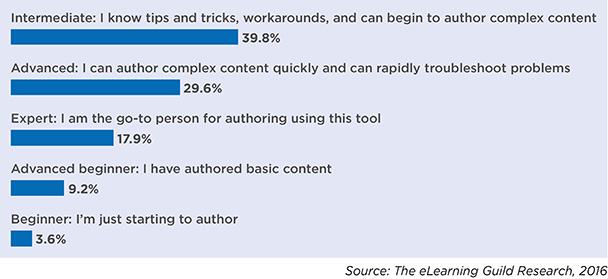
Figure 1: Skill level with authoring tools. (Note: Total percentages shown in some of these diagrams may be higher than 100% because of rounding.)
Next, we asked what length of time respondents had been engaged in authoring or otherwise developing eLearning content (Figure 2). The largest group (20.4%) said they had been authoring or developing for 4 – 6 years. Two slightly smaller groups (both at 16.3%) reported 7 – 9 years and, on the other end of the scale, 1 – 3 years.
Perhaps most interesting was the large, combined group of respondents who have extensive experience in authoring or developing eLearning. This group, as a whole (total of 41.3%), had 10 years of experience or more.
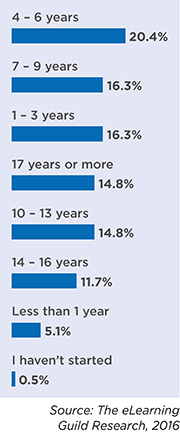
Figure 2: Length of experience using authoring tools
Features, options, and capabilities that practitioners want
This is an important part of the research report because it provides a clear picture of the features, options, and capabilities that practitioners most want in their asynchronous authoring tools in 2017 and beyond.
The results reported in this chapter are complex, detailed, and wide-ranging. We will preview only three of the important topics covered in the report. These include discussions of:
- Preferences for power vs. ease of use
- Importance of authoring options
- Importance of publishing options, including the critical role that responsive design plays in authoring tool characteristics
See the entire research report for detailed discussions of these and other topics, as well as practitioner insights and guidance.
What would you choose: Power or ease of use?
In our 2013 authoring tool survey, we asked about “power vs. ease of use” for the first time. In other words, we asked respondents to choose between two options:
- Power—Would they prefer a more powerful tool, one that is more difficult to learn but includes many more features to make the instructional design approach as rich and engaging as possible?
- Ease of use—Or, would they like to have the ability to do more with tools that are easy to learn and use, even though these tools will normally have fewer features with which to apply an instructional design approach?
Authoring tool vendors may try to convince buyers that their tool is both easy to use and very powerful. Of course, “ease of use” and “power” are relative terms. A tool’s ease of use and power can only be measured against the ease of use and power of other eLearning development tools. That being said, most vendors are not actively attempting to identify what their competition is including in its tools. That identification and analysis process would be very time-consuming, considering the number of tools and how often they are updated. As such, many tool vendors (though not all) convince themselves that their tool is really the best one available, as their whole experience is wrapped up in that tool.
In 2013, 58.8% of respondents said they’d rather have power, while 36.6% said they preferred ease of use and 4.6% could not decide.
In Figure 3, we can see that the percentage of those who prefer power has increased, at the expense of ease of use. Over 61% of survey respondents said, “Give me power,” while half that number (31.1%) said, “Make it easy.” Over 7% said they did not know which one of the two options they more preferred.
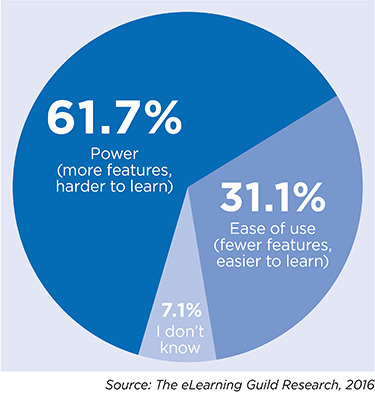
Figure 3: Authoring tool power vs. ease of use
Importance of authoring options
We also asked a series of questions to determine how important it was to our respondents that certain options are included in an authoring tool. In order to rank these, we asked survey respondents to tell us how important each option was to them, using a scale of 1 – 6 where 1 indicated “not important” and 6 indicated “very important.” Figure 4 shows the percentage rankings of the options we surveyed. The percentages shown from this point on represent those who rated the feature a 4 or higher.
We can see from the results (Figure 4) that while Windows continues to be the primary platform for authors (at 92.8%), about 44% of respondents indicate that the Macintosh platform is important to them, and even the Linux platform is desired by over 8% of respondents. Interestingly, while respondents also show high interest in cloud-based tools, perhaps more would have indicated such if we had made it clear that most cloud-based tools can be accessed from all three operating systems.
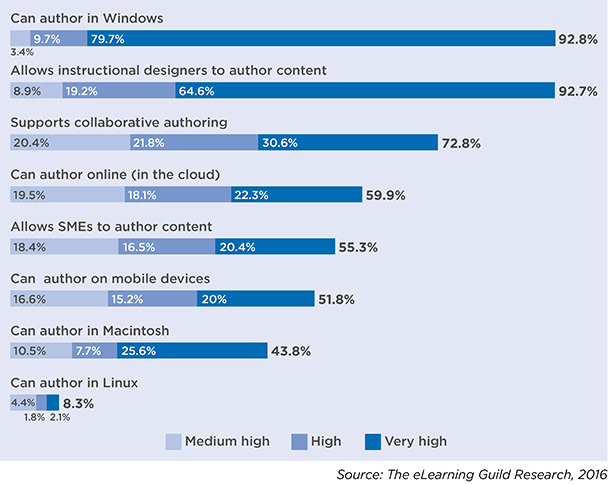
Figure 4: Importance of authoring options
A somewhat surprising result of this survey question is that more than half of respondents would like to be able to author directly on mobile devices. While we assume most respondents meant tablets and not smartphones, it shows how far mobile has come.
Collaborative authoring, in which two or more authors can work together on a lesson, typically using a check-in/check-out system, seems to be highly desired, too (at 72.8%). Collaborative authoring is easiest to implement in cloud-based tools, of course, as everyone can log in to the tool vendor’s website from anywhere in the world rather than trading files using Dropbox or another sharing mechanism.
Finally, this question also shows that a huge number of respondents would like for instructional designers (92.7%), and even subject matter experts (55.3%), to be able to directly author lessons. Recall that in Figure 3, about 62% of respondents preferred having more powerful tools while about 31% preferred easy-to-use tools. The results of this question show how difficult it can be to keep our priorities consistent. We’d all like to have tools that are easy enough that instructional designers and SMEs can author lessons directly, but we don’t want to give up the power that comes with many features. Having many features leads to complexity, and that leads to a tool that is harder to use. From our experience, most instructional designers and SMEs are not willing, or simply don’t have the time, to learn the full feature set of powerful tools, which often requires a bit of a programmer mindset.
Therefore, it would be difficult for a tool vendor to satisfy both the need for ease of use and the demand for power. Ideally, it seems many users agree that a tool should have two levels. The first would use a simple interface and might not have all the features present, and the second would allow those who need the powerful features to have access. The latter won’t mind getting their hands dirty a little to truly customize the instructional design to the learner and the content. Of course, there can be more than two levels.
Importance of publishing options
Before learners can use the eLearning you create, most authoring tools require that you publish your lesson in one of several formats that will be suitable to upload or link to a learning management system, or simply to post on a website. So, which options are important to you?
As publishing options reflect changes in the computer and web world overall, this question takes on further meaning because the options show what changes are occurring within the technical departments of organizations (Figure 5). Therefore, we thought it would be interesting to see what has changed since 2013, when our last authoring tools report was published.
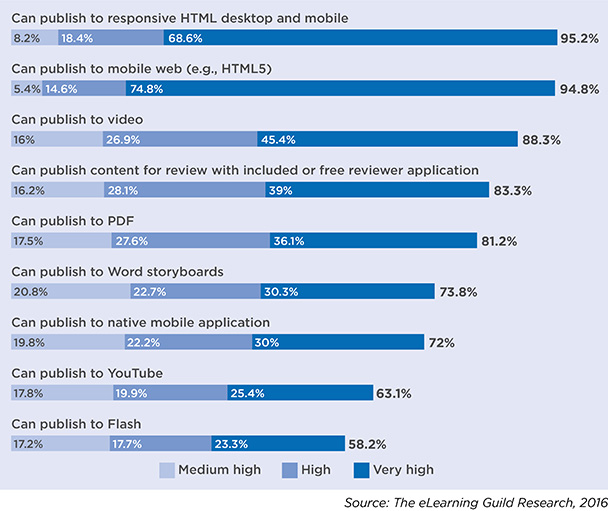
Figure 5: Importance of publishing options
Not surprisingly, Figure 5 also shows that there has been a significant change in the responses regarding publishing to Flash vs. HTML5:
- In 2013, almost 62% indicated that publishing to Flash was highly or very highly important. That number now has dropped slightly to 58.2%.
- On the other hand, the percentage of respondents who indicated in 2013 that HTML5 and/or mobile publishing was highly or very highly important was already at 74.6% and is now at 94.8%.
It’s all about responsive design now
For this survey, we added a new topic that was just starting to become widely known in 2013: responsive web design. Responsive design allows web authors to create one set of files that will adapt themselves to display correctly on any device. As this technology has grown in popularity (most commercial websites are now built this way) and the importance of delivering learning to mobile devices has increased tremendously, it has also become important for an eLearning authoring tool to include responsive design capabilities.
Tool vendors are responding in kind, and several have begun to build this ability into their tools.
An amazing 95.2% of respondents have deemed responsive design important or very important, even though some respondents also rated mobile output among the most important features in a tool. Tool vendors, take note!
Comparing other changes:
- Publishing to PDF was considered important or very important by 51.7% in 2013, and it shows how important the PDF format remains today that that number has risen to 81.2%.
- It’s also clear that video continues to grow in importance, with a jump from 57.5% to 88.3%, even though publishing to a video format means losing any interactivity in your lesson.
- Those who would like to be able to publish a beta version lesson, so that reviewers can add comments and such, has risen from 59.2% to 83.3%.
- The ability to publish to Microsoft Word–based storyboards has remained desirable and in fact has also risen, from 63.2% to 73.8%.
- Finally, we also asked how many would like to publish lessons as YouTube videos. This means losing any interactivity in such lessons. The percentage of respondents who find this important has increased from 44.2% in 2013 to 63.1%.
Looking forward
Our asynchronous authoring tool report focuses on the features, options, and capabilities that practitioners want in 2017 and into the future. We provide a micro-level discussion of the specific features practitioners want from their authoring experience. These options and features are examined from a variety of perspectives, such as publishing options, global features common to all tools, and specialized features, which span a broad range of categories from assessment to user community and support. This information should prove valuable in predicting which features, options, and capabilities will be included in the next generation of tools.
We believe that the information included in this research report is essential for the current learning landscape. Even more importantly, it will enable readers to better anticipate which features, options, and capabilities may be included in the next generation of asynchronous authoring tools.
Beginning this year, the Guild will publish interim updates to our asynchronous authoring tool report and continue to monitor the rapid evolution of tools, technology, and practitioner interests in this critical subject area. We look forward to a similarly wide participation of Guild members and interested practitioners in this continuing research.

